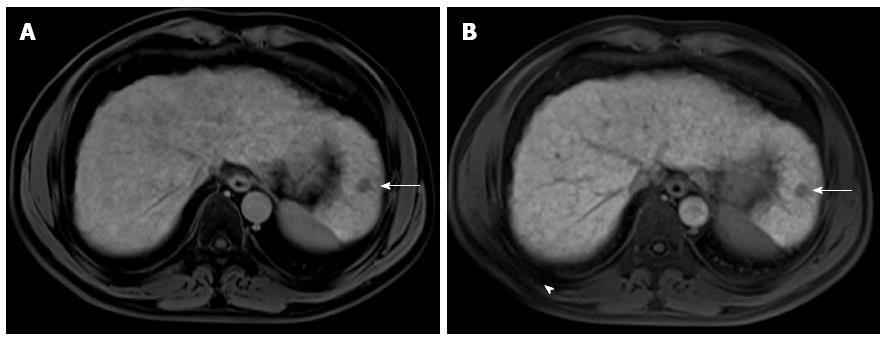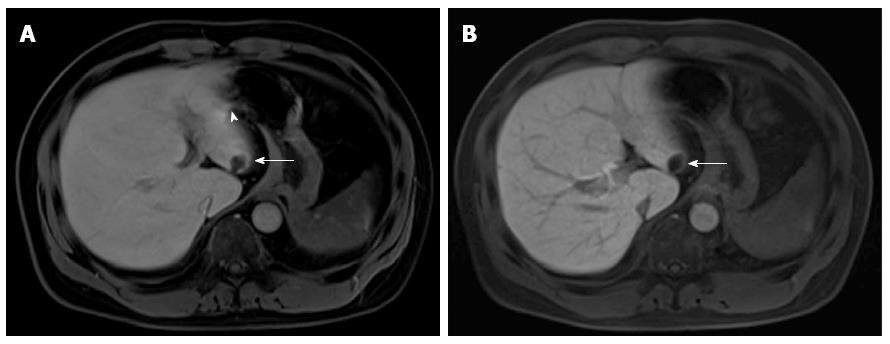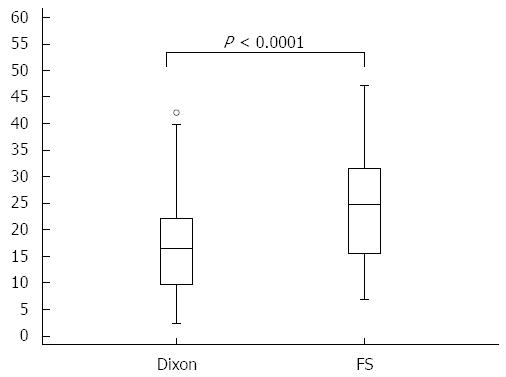Copyright
©The Author(s) 2015.
World J Gastroenterol. Apr 28, 2015; 21(16): 5017-5022
Published online Apr 28, 2015. doi: 10.3748/wjg.v21.i16.5017
Published online Apr 28, 2015. doi: 10.3748/wjg.v21.i16.5017
Figure 1 A 54-year-old patient with hepatocellular carcinoma.
The fat suppression is stronger and more uniform with Dixon-volumetric interpolated breath-hold examination (VIBE) (A) than chemically selective fat saturation-VIBE (FS-VIBE) (B), the slight signal loss is seen with FS-VIBE (arrowhead, B), and the score was 4 for Dixon-VIBE and 3 for FS-VIBE. However, the hepatic veins are clearer with FS-VIBE. The tumor is well depicted with each sequence (arrow).
Figure 2 A 68-year-old patient.
The border of tumor (arrow) and intrahepatic portal vein are sharper with chemically selective fat saturation-volumetric interpolated breath-hold examination (FS-VIBE) (B) than Dixon-VIBE (A), and the score was 3 for Dixon-VIBE and 4 for FS-VIBE. Artifact from the air in the stomach is seen with Dixon-VIBE (arrowhead, A). The suppression of subcutaneous fat is stronger with Dixon-VIBE. VIBE: Volumetric interpolated breath-hold examination; FS: Fat saturation
Figure 3 Box-and-whisker plots show median and interquartile ranges for liver-to-lesion contrast in hapatobiliary phase for chemically selective fat saturation-volumetric interpolated breath-hold examination and 2-point Dixon fat-water separation-volumetric interpolated breath-hold examination.
- Citation: Ding Y, Rao SX, Chen CZ, Li RC, Zeng MS. Usefulness of two-point Dixon fat-water separation technique in gadoxetic acid-enhanced liver magnetic resonance imaging. World J Gastroenterol 2015; 21(16): 5017-5022
- URL: https://www.wjgnet.com/1007-9327/full/v21/i16/5017.htm
- DOI: https://dx.doi.org/10.3748/wjg.v21.i16.5017















